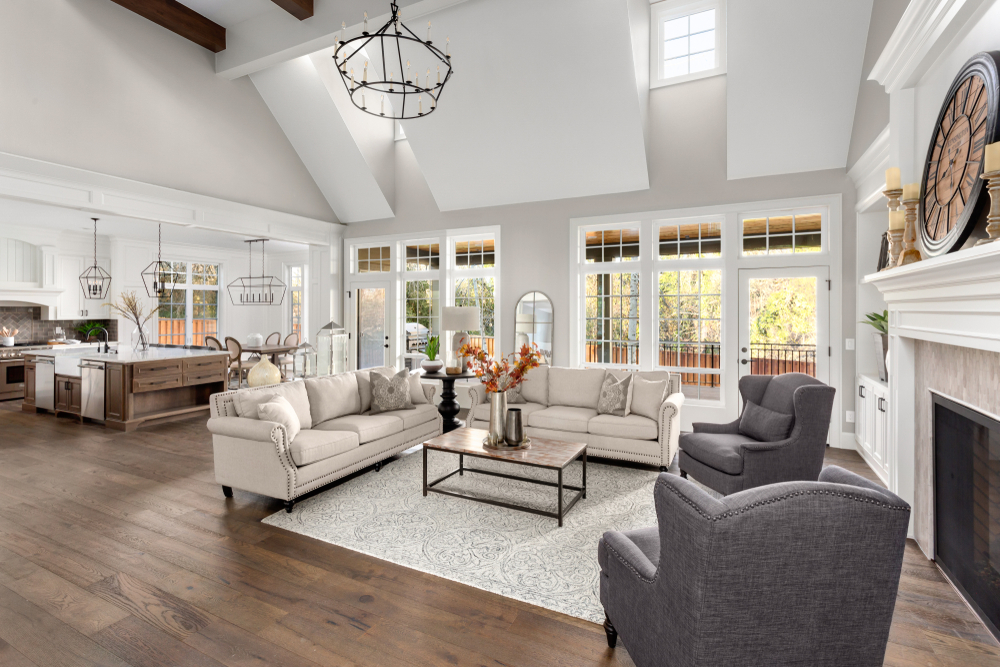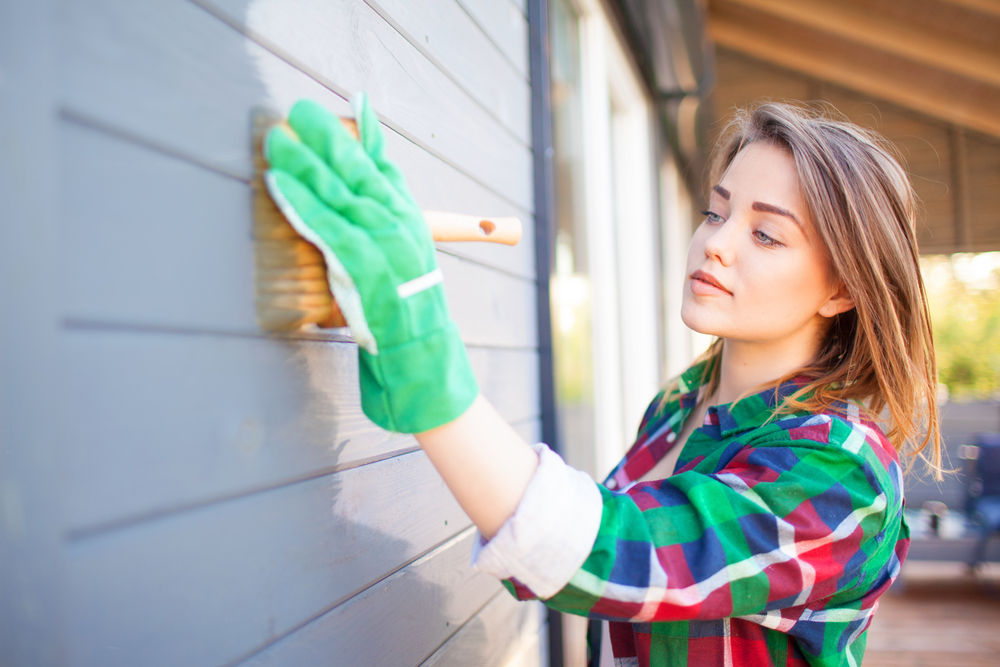Buyers start creating impressions of your home before they even step out of the car. In a market where quick decisions are made from listing photos and drive-bys, the exterior of your home needs to make a strong first statement. It needs to tell a story which engages the buyer at the very first sight. And the truth is most buyers have already formed an opinion about your property within seconds of seeing it. If that first impression falls flat, even the most beautifully renovated interior might not be enough to win them over.
The good news? You don’t need to spend thousands of dollars to make your home stand out. Smart, targeted improvements can transform your property’s street presence without breaking the bank.
Why Your Home’s Exterior Holds So Much Power
There is something very instinctive about the way we judge homes from the outside. If a well-kept exterior looks great; it communicates to buyers that someone has been paying attention to details. Visual psychology plays a major role; a well-maintained exterior gives buyers a reason to believe the home is equally cared for inside. More than just aesthetics, curb appeal signals attention to maintenance and creates an emotional connection. If buyers feel good the moment they arrive, they are more likely to overlook minor flaws elsewhere. On the flip side, peeling paint or overgrown bushes can undo all that good work. Even if your electrical system was just updated and your roof is only three years old, buyers might not stick around long enough to discover those improvements if the exterior doesn’t invite them in. First impressions are hard to shake, and in real estate, you rarely get a second chance to make one.
Start with Highlighting Structure
Before you think about adding anything new, look carefully at what needs to be fixed. Walk around your property like you are seeing it for the first time. Look for loose shutters, cracked walkways, or that one section of trim that’s been asking for a fresh coat of paint. These are not glamorous fixes, but they are the foundation of good curb appeal. A power washer can work wonders on tired siding, concrete, and outdoor furniture. Sometimes what looks like wear and tear is just accumulated grime that comes off with some elbow grease and the right tools. Pay attention to your home’s trim work and architectural details. The most effective curb appeal upgrades accentuate your home’s structure; its lines, rhythm, and symmetry. Clean, well-maintained trim makes the entire exterior look sharper. If yours is showing signs of age, a fresh coat of paint in a complementary color can instantly pull everything together and give the home a more cohesive, polished look.
The Front Door Deserves Special Attention
Your front door is doing a lot of heavy lifting. It’s the focal point that draws the eye and sets the tone for what buyers expect inside. If your door looks tired or doesn’t quite fit your home’s style, replacing it might be worth the investment. But even a good cleaning and fresh paint can make a surprising difference. When choosing colors, skip the trends. A classic navy, forest green, or rich burgundy works with most home styles and won’t look dated in five years. The key is picking something that complements your exterior without fighting for attention. Don’t forget the hardware. New door handles, locks, and house numbers can make your entrance feel more expensive without the matching price tag. Choose finishes that work with your home’s other metal elements like your light fixtures, mailbox, and any decorative hardware.
Landscaping That Actually Makes Sense
Forget about creating an elaborate garden showcase. The goal is to make your property look well-maintained and inviting, not like it requires a part-time gardener to keep up. Start with clean edges. There’s something about crisp lines between your lawn and planted areas that makes everything look more intentional. You can create these with a simple edging tool or install metal or plastic borders that maintain themselves. Focus your planting efforts where they will have the most impact; like around your front entrance and along the areas most visible from the street. Instead of scattering small plants everywhere, invest in a few larger specimens that make a statement. A couple of well-placed shrubs or small trees can frame your entrance and add structure to your landscape.
Choose plants that suit your climate and maintenance style. Native plants typically need less water and care, which appeals to buyers who don’t want to inherit a high-maintenance yard. If you are selling during a particular season, add some seasonal color, but keep it simple. Fresh mulch ties everything together and makes planted areas look finished. Dark mulch makes plants stand out and gives beds a clean, uniform appearance. Just keep it pulled back from plant stems and your house foundation to avoid moisture problems.
Lighting That Works After Dark
Don’t underestimate the impact of good exterior lighting. Many buyers drive by homes in the evening, and thoughtful lighting can make yours feel welcoming and well cared for. It also conveys a sense of security and attention to detail; the two qualities buyers notice and value. You don’t need an elaborate setup. Just focus on key areas like the path to your front door, your house numbers, and maybe one or two architectural features. Warm-toned lights create a more inviting feel than harsh white ones, and solar-powered options are now both stylish and efficient.
The Art of Strategic Hiding
Sometimes good curb appeal is about what you don’t show. Stuffs like trash cans, air conditioning units, and utility meters are necessary but not exactly selling points. Simple screens, lattice panels, or strategic plantings can minimize these distractions without expensive construction.
The same goes for personal items that might be cluttering your exterior. That collection of planters which you may have accumulated over the years, seasonal decorations that have seen better days, or outdoor furniture that doesn’t quite work; sometimes removing things has more impact than adding them.
Color Choices That Don’t Date Themselves
When it comes to exterior colors, restraint usually wins. Buyers need to be able to imagine themselves in your home, and bold or highly personal color choices can make that harder. Neutral doesn’t have to mean boring; it just means giving buyers a blank canvas for their own vision. If your home’s main color is neutral, you can add interest with accent colors on doors, shutters, or trim. Earthy tones like sage green, warm gray, or deep brown work with most architectural styles and landscape settings.
Timing and Budget Strategy
The timing of your improvements can affect both cost and impact. End-of-season sales at garden centers can help stretch your landscaping budget. Late fall and early spring often offer the best deals on plants and outdoor supplies. Many curb appeal improvements are perfect DIY projects. Painting, basic landscaping, and simple repairs can be handled by most homeowners with some patience and the right tools. Save professional services for jobs that require special skills or equipment, like electrical and plumbing work, major concrete repairs, or tree removal.
Conclusion: What This All Adds Up To
Good curb appeal is not about creating a magazine-perfect exterior. It’s about making your home feel cared for and move-in ready. These improvements typically pay for themselves in faster sales and better offers, but the real value is in making buyers feel confident about what they are seeing.
Every neighborhood has its own character, and the best curb appeal improvements work with your home’s natural style rather than against it. Whether your house is a sleek contemporary or a century-old craftsman, the goal is the same to make buyers slow down, take a second look, and want to see what’s inside.
Remember, you are not just competing with other homes for sale; you are competing with buyers expectations and dreams. A little attention to your home’s exterior can go a long way toward making those dreams feel possible.


